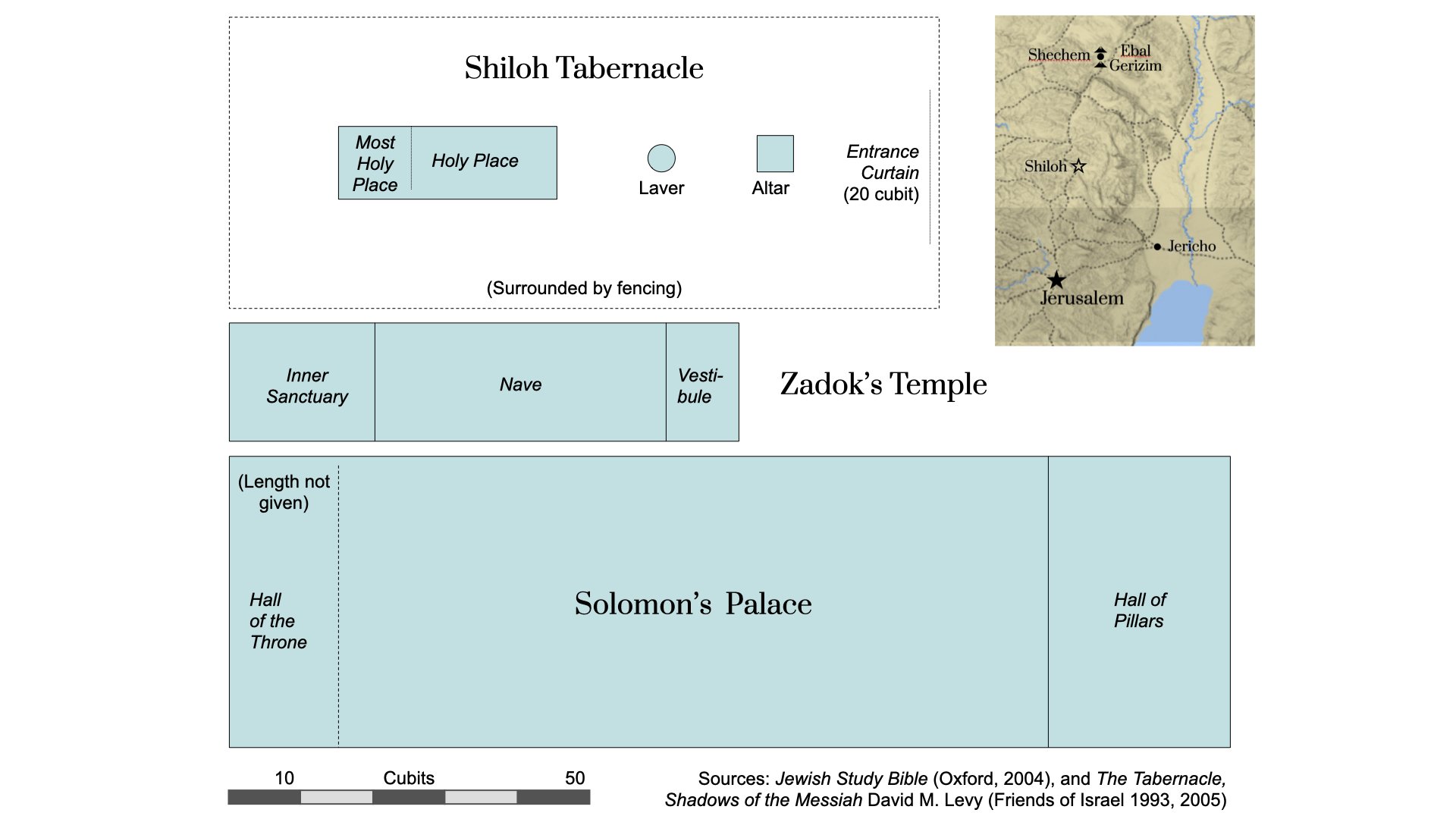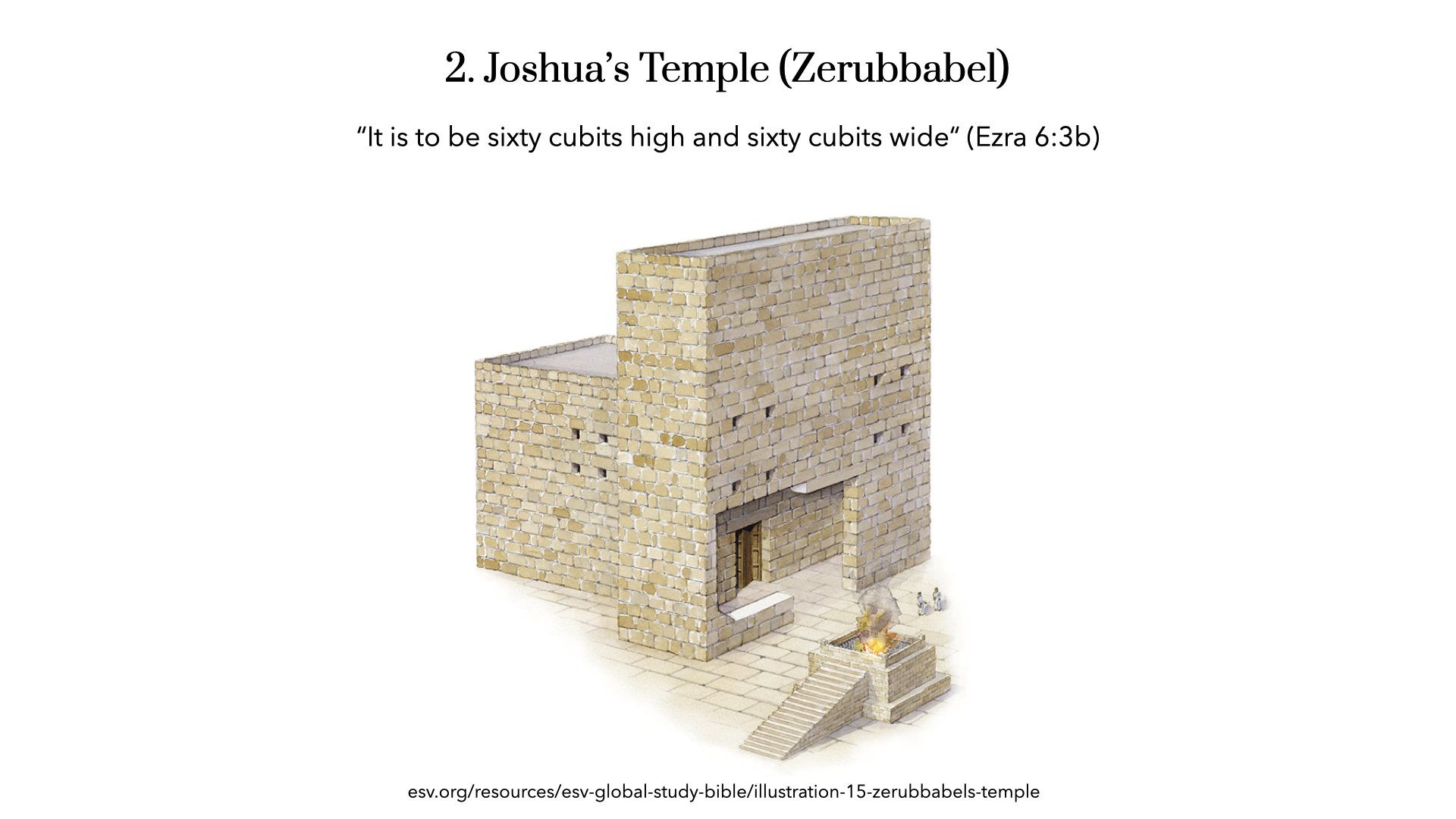The House(s) of God
Some Christians think there’s a third temple that the anti-christ is going to build on the way to torching the world, something, something. I dunno, I wasn’t usually paying that much attention, because I’m pretty sure there’s already been three…
God’s Tent
The first dwelling place of God was the tabernacle, a portable tent that the Israelites constructed in the wilderness and carried with them wherever they went. When the time came to enter Canaan, and the land was divided up between the tribes, the tabernacle was given a more permanent home at Shiloh, in the tribal allotment of Ephraim.
The tabernacle remained at Shiloh throughout the time of the Judges, until the people rejected YHWH in favor of kings. They had already seen what a king could do, in Abimelek (“father of kings”), but they insisted so… YHWH obliged. The idea of a Temple came from the mind of Israel’s best king, but still a king.
I sometimes wonder what the Temple would have looked like if David were its architect, but we only have the product of Solomon’s imagination… And the entitlement shows.
Kings were not allowed to enter the Holy Places or handle the elements and vessels inside. It’s a little weird to call something by your name that you can never enter… You might know it as “Solomon’s Temple,” but it aligns more with Biblical tradition to call this first one Zadok’s Temple since he would have been more involved in its construction and maintenance.
1. Zadok’s Temple
Zadok’s temple was built with slave labor using imported materials, not exactly the the surplus of “freewill offerings” the Tabernacle inspired. One thing that’s for sure is that they definitely didn’t run out of fine material building Solomon’s palace, because there was plenty of bling for the First Temple.
Zadok’s temple stood for about 380 years, surviving the destruction of the ten northern tribes. Jerusalem was sacked and the temple destroyed when the Babylonian king Nebuchadnezzar II came through in 587 BCE. The aristocratic class was exiled from the Holy City for an entire generation, and the Jews left behind became known as Samaritans. During the exile, the High Priest Jehozadak was unable to perform his sacrificial duties because there was no temple.
2. Joshua’s Temple
When the Persian emperor Cyrus the Elder restored the exiles to Jerusalem, he installed Zerubbabel as governor and provided funds to rebuild on the ruins of Zadok’s temple. The high priest in charge was Jehozadak’s son, Joshua.
Joshua’s temple was nowhere near as ornate as Zadok’s, and all we know about it’s measurements come from a single verse in Ezra. It was just as long as the first, but twice as high. This is the Second Temple that inspired a Jewish renaissance, but how ling did that period persist? The general consensus is that it lasted until the Roman desolation in the late 60’s but… there’s a problem with that logic.
3. Herod’s Temple
Herod the First was an Idumean, a group thought to be descendants of Esau, Jacob/Israel’s older twin. To impress his subjects, he decided to ‘upgrade’ the too-modest temple built by Joshua. This time around, the destruction of the temple was not by force, at least not overtly. Rather than violent upheaval, Joshua’s temple was methodically dismantled to make way once more for the opulence of an imperial imagination.
If Herod was it’s builder, then who was his patron, his Solomon and Zerubabbel? None other than the first Roman emperor whose victory over the Republic was secured at the Battle of Philippi in 43 BCE. He was known as Octavian then, but when he usurped power he took the name Augustus.
Whose Temple?
Depending which Gospel you prefer, the temple and its destruction was a central theme in the plot to arrest and execute Christ. In Mark 14:58 and Matthew 26:61, his threat to destroy it was used as evidence to convict him before the Jerusalem Sanhedrin. In John 2:19, the remark follows his turning over the vendor’s tables in the courtyard. Onlookers retort “It has taken forty-six years to build this temple, and you are going to raise it in three days?” They’ve said the quiet part out loud; the temple in the Messiah’s crosshairs was Herod’s, not Joshua’s. Herod began taking Joshua’s temple apart in 19 BCE, placing John’s account around 27 CE, making the Messiah about 32.
If first-century Judeans distinguished between Joshua’s second temple and Herod’s third temple, then why shouldn’t we?
Luke’s account goes further, reminding his audience the Messiah’s name was not to be associated with opulence. Unlike the imperializing instinct of Solomon and Herod, whose “temple was adorned with beautiful stones,” (Luke 21:5) the modest Messianic instinct is carried in the holy name of Joshua; “Watch out that you are not deceived. For many will come in my name, claiming, ‘I am he,’ and, ‘The time is near.’ Do not follow them.”
It makes me think of people overfed and unconcerned, like John Hagee, who make their money fear mongering, preaching false prophecies about a third temple. Do not follow them. I’m not sure they know how to count.





